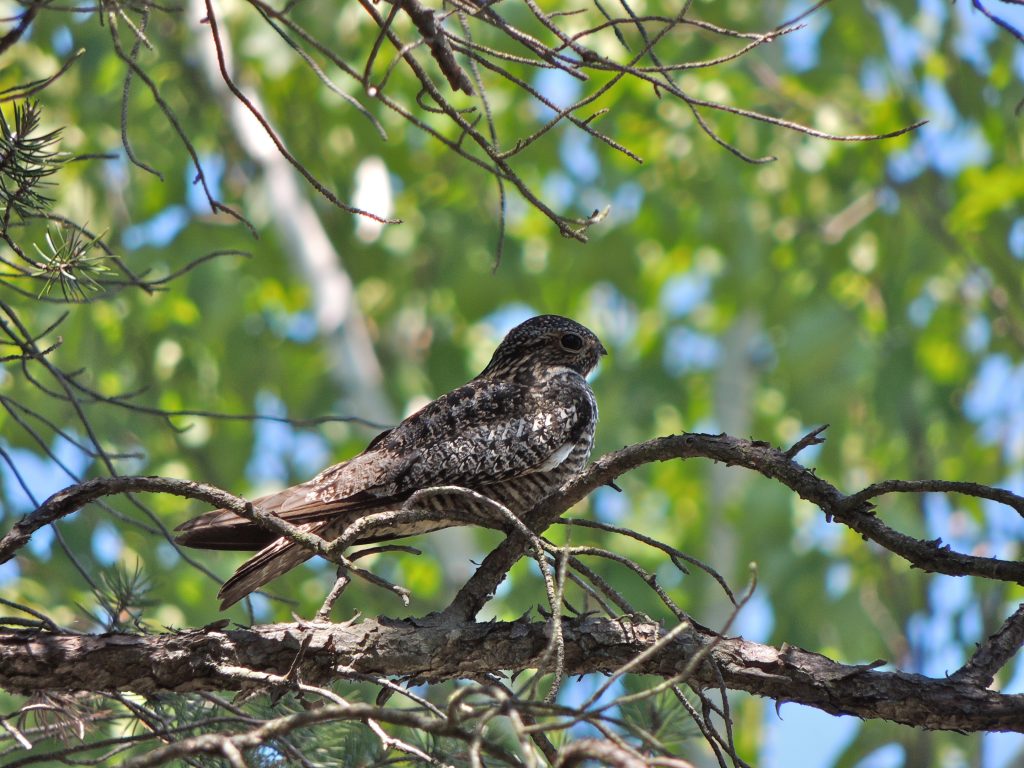Home, Burlington, ON. August 23 2020. I write this as the last light of the day smudges the north-western horizon leaving faint pink edges around distant thunder clouds. We have just come in from sharing a home-made peach pie with friends and catching up on progress: them, us, various children and partners, and grandchildren of all ages.
In the warm comfort of an August evening it entered my mind that I should look skyward in case a Common Nighthawk should happen to pass overhead, this is about the time of year and time of day when they might be seen. And, almost as if it had been staged, one and then a second passed quite low above me. Their characteristic flight makes me think of them as if hanging on long springs, and perhaps described best by Pete Dunne, “ Flight is wheeling, darting and tipsy. Wingbeats are given in a quick or slow series followed by an unsteady raised-wing glide.”
Yesterday, a small, carefully distant, group of birder friends and I had been discussing the annual, late summer flight of Common Nighthawks. We had noted that now, late August, is the time to be looking for them and dusk seems to be their favoured flight time so, we’ve been watching. A bit of research found that they have a long flight ahead of them: from here to Florida, across the Gulf of Mexico to the Yucatan Peninsula, then continuing south to half way down the length of South America into southern Brazil, Paraguay and Uruguay where they’ll spend our winter; roughly 10,000 kilometres and all on a diet of insects caught in mid-air. Reportedly, they often move in big, leaderless flocks, sometimes in long rectangles, adding local birds, pied-piper style, as they go. Curious and incredible.

It is unusual to see a Common Nighthawk anywhere other than overhead because by day they remain hidden and, like all members of the Nightjar family, they are cryptically patterned. Several years ago, we disturbed one on its forest-floor nest, it flew moth-like to a nearby branch and sat, waiting for us to go and hoping not to be seen. Here it is.
P.S. The day after this post was published, a friend emailed me to say she’d like to see a nighthawk, had never seen one. She lives in quiet part of town, fairly close to Lake Ontario where it should be fairly easy to see one given the right time and tide. I replied later and we agreed to meet at 7 that evening (yesterday August 24) in a strategic, wide open view, spot (actually a cemetery). Hardly had we set up our folding camp chairs and blown the dust off our binoculars than the first nighthawk appeared and passed almost overhead, then second, third, fourth ..all the way up to 7. Wow!
I bet you don’t realize how reasuring it is to read these posts.
You see so much that just passes me by even when I think I’m paying close attention. It’s reasuring that there are so many interesting birds out there flying around seemingly oblivious to our petty, and not so petty, concerns down here.
It’s as if COVID has not affected them at all, or maybe only to their benefit with fewer planes in the air to compete with.
Well, maybe. Some things pass you by, some things pass me by. I’ve learned from artist friends (and relatives) that to draw is to see. And I know that you, as an artist, see many many things that others don’t.